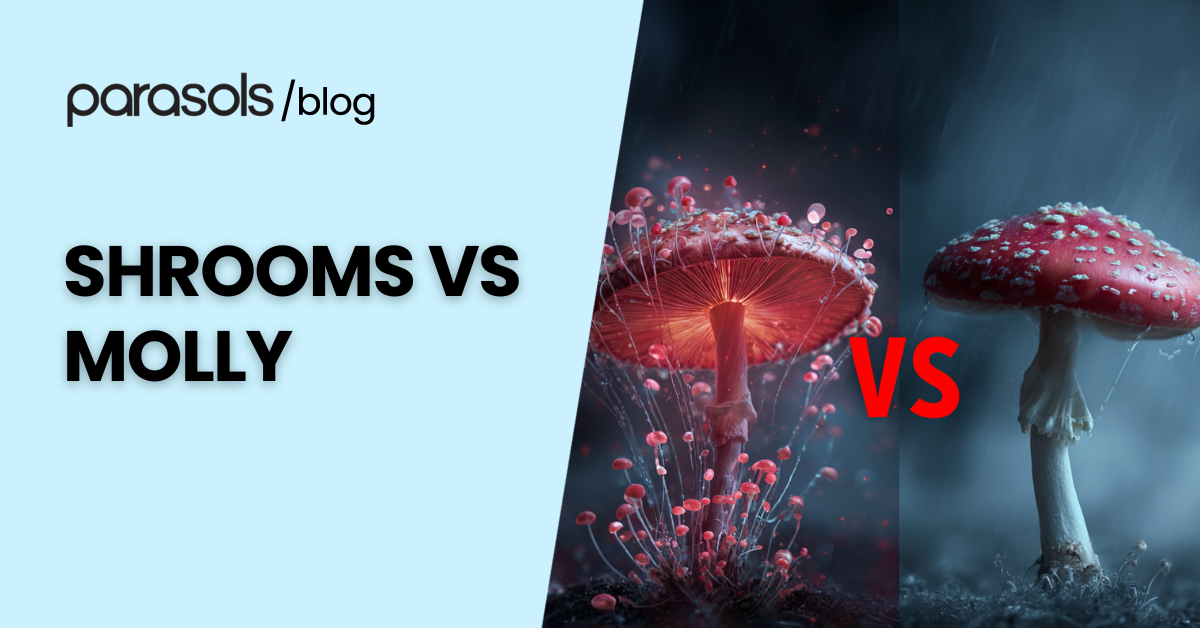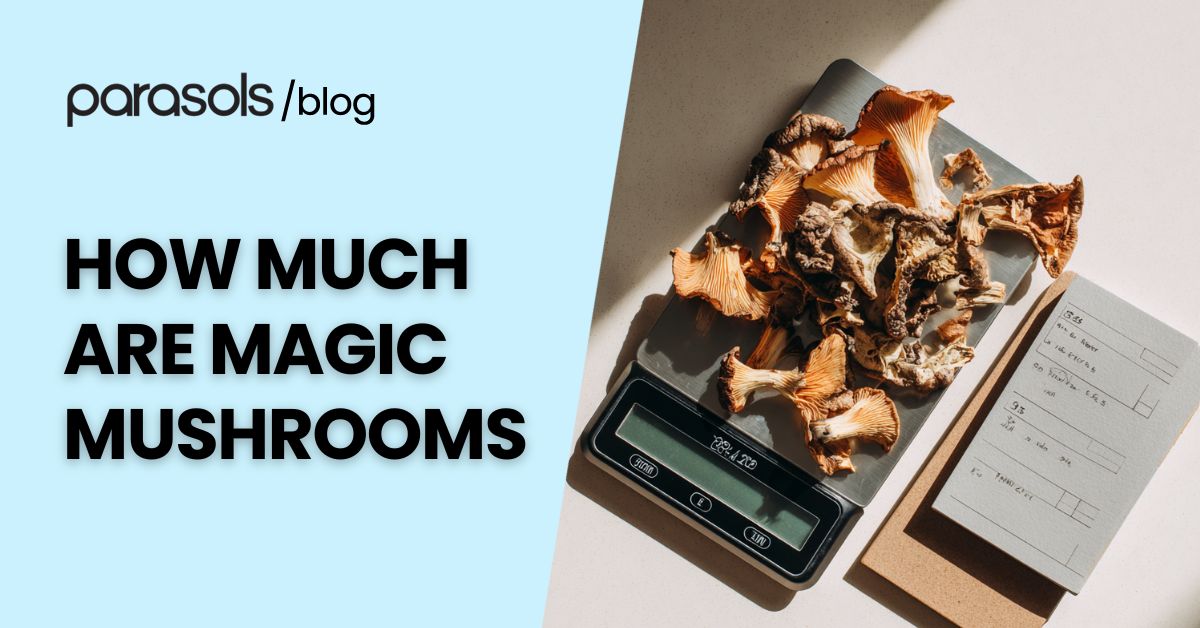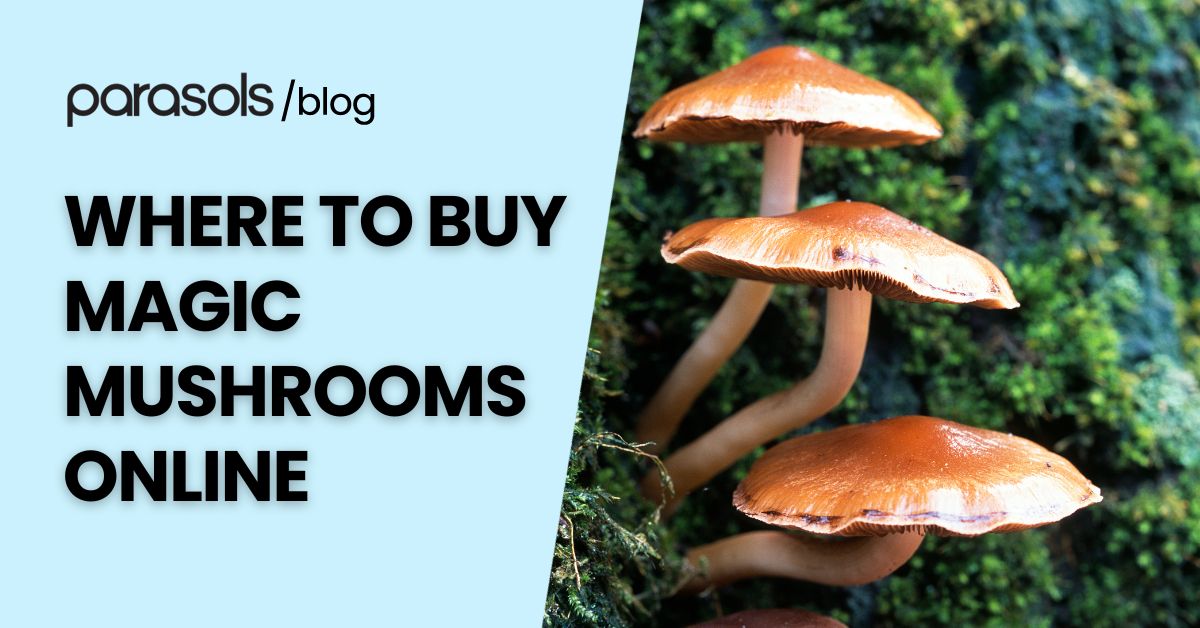When it comes to learning altered states of mind, many people find themselves curious about shrooms vs molly — two very different paths to very different experiences. Whether it’s curiosity, healing, or simply wanting to understand how these substances affect mental health, it’s important to know what sets them apart before making any decisions.
Let’s look at the key factors that can help you make an informed, responsible choice.
Key Takeaways
- Shrooms (psilocybin) and molly (MDMA) both alter mood and perception but in different ways.
- Shrooms promote introspection and emotional depth; molly enhances empathy and energy.
- Psilocybin is natural, while MDMA is a synthetic compound.
- Each carries unique risks, aftereffects, and therapeutic potentials.
- Legal status and safety vary by location, making responsible, informed use essential.
What are Shrooms?
Shrooms, also known as magic mushrooms, are fungi that contain psilocybin — a natural psychedelic substance that can alter perception, mood, and thought. When ingested, psilocybin converts to psilocin in the body, affecting serotonin levels in the brain and leading to vivid sensory changes, emotional insights, and in some cases, mystical effects.
Researchers are currently studying psilocybin therapy and its potential to treat depression, anxiety disorders, and other mental health conditions.
What is Molly?
Molly is the common name for MDMA, a synthetic psychoactive drug known for its mood-enhancing and empathogenic effects. It increases levels of serotonin, dopamine, and norepinephrine in the brain, creating feelings of euphoria, emotional connection, and heightened sensory perception.
MDMA is also being studied in clinical trials for its potential use in MDMA assisted therapy, particularly for post traumatic stress disorder and other mental health conditions.
Shrooms vs Molly

When comparing shrooms vs molly, both can profoundly alter mood and perception, but they differ in source, effects, and how they interact with the brain. These psychedelic drugs are part of ongoing psychedelic research, studying their unique impact on consciousness, emotions, and neural function.
- Source: Shrooms are natural fungi containing psilocybin, a classic psychedelic substance found in psilocybin mushrooms. Molly, on the other hand, is a synthetic compound—MDMA—produced in labs alongside other drugs like lysergic acid diethylamide, which has also been studied in consciousness research and clinical settings.
- Primary Effects: Shrooms often create vivid visual hallucinations, deep emotional insight, and a reflective psychedelic experience. Molly boosts mood and empathy, heightening energy and emotional connection rather than altering perception deeply. Despite their psychedelic effects, studies note significant differences in how these substances influence the brain’s chemistry and emotional processing.
- Mechanism of Action: Psilocybin activates serotonin receptors, changing brain activity and spontaneous brain function. MDMA floods the brain with serotonin, dopamine, and norepinephrine, producing intense feelings of euphoria and warmth. Healthy volunteers measured in clinical studies have shown dose-dependent responses that vary across individuals.
- Therapeutic Use: Psilocybin assisted therapy is under clinical research for treatment resistant depression, anxiety disorders, and obsessive compulsive disorder. MDMA assisted psychotherapy is showing promise in treating posttraumatic stress disorder and severe depression through controlled, double blind clinical trials. These approaches combine psychedelic assisted psychotherapy with talk therapy to help patients process trauma and improve overall mental health.
- Duration: A psychedelic trip from shrooms generally lasts around 4 to 6 hours, while molly’s effects typically persist for about 3 to 5 hours. Consciousness research continues to study how such experiences may relate to altered states and long-term therapeutic potential.
- Risks and Aftereffects: Shrooms can cause temporary anxiety or altered perception in certain therapeutic settings or uncontrolled environments. Molly may increase heart rate and blood pressure and lead to mood dips as serotonin levels decline post-use. Limited research suggests that individual differences, other treatments, and the primary focus of therapy can influence outcomes.
- Legal Status: Both are illegal substances in many regions, though recent psychedelic studies and clinical trials are re-evaluating their therapeutic potential within safe, monitored environments that follow strict rules and informed consent. Associate professors and researchers in brain sciences continue to call for further details and systematic studies before these substances move beyond experimental use.
How to Choose Between Shrooms Vs Molly
Choosing between shrooms vs molly depends on your intentions, mindset, and desired experience. Each substance interacts with the brain differently, offering unique effects and potential risks. Here are the main factors to consider before making a decision:
Purpose and Intention
Ask yourself why you’re considering either substance. Shrooms are often chosen for introspection, emotional healing, or experiencing consciousness. Molly, meanwhile, is typically used for social connection, empathy, and energy enhancement. Understanding your purpose helps guide a safer and more meaningful experience.
Setting and Environment
A calm, supportive environment is crucial. Shrooms are best experienced in a therapeutic setting or peaceful space where introspection feels safe. Molly use often occurs in social or energetic environments, but overstimulation can increase risk. Always ensure your surroundings promote comfort and emotional safety.
Emotional Readiness and Mental Health
If you have a history of mental health conditions like anxiety disorders, bipolar disorder, or major depressive disorder, consult a healthcare professional first. Psilocybin assisted therapy and mdma assisted therapy are being studied in clinical trials for these conditions, but unsupervised use may worsen symptoms.
Physical Health Considerations
Both substances affect the body differently. Shrooms can temporarily alter perception and cause nausea, while molly can raise blood pressure and body temperature. People with heart issues or other medical conditions should avoid MDMA without medical supervision.
Duration and Aftereffects
A psilocybin trip can last 4 to 6 hours with lingering emotional reflection afterward. Molly’s effects last around 3 to 5 hours, followed by possible serotonin depletion and fatigue. Consider your schedule, recovery time, and ability to rest afterward.
Legal and Safety Factors
Both are classified as illegal substances in many countries, though psychedelic assisted therapies are under scientific research for their therapeutic potential. If you decide to participate in any form of psychedelic therapy, do so only in approved clinical studies or under professional guidance that ensures informed consent and strict safety protocols.
Final Thoughts

Both shrooms and molly open unique windows into the mind — one through introspection, the other through connection. Choosing between them depends on what you seek: deeper self-understanding or emotional uplift.
While molly may offer temporary euphoria, psilocybin in shrooms continues to show remarkable therapeutic potential in treating depression, anxiety, and other mental health conditions under professional guidance.
If you’re curious about the healing side of psychedelics, learn how psilocybin assisted therapy is changing the way we treat depression — and why researchers see it as a major step forward in modern mental health care.
Frequently Asked Questions
Can you mix shrooms and molly?
Combining shrooms and molly — a practice sometimes called “hippie flipping” — can intensify both substances’ effects, leading to unpredictable emotional and sensory experiences. While some users report heightened empathy and deeper visuals, others experience anxiety, confusion, or overstimulation. Because both substances affect serotonin levels, mixing them also increases the risk of serotonin syndrome, a potentially dangerous condition. Clinical research does not recommend combining psychedelic substances outside controlled therapeutic settings.
Are there long-term effects of using shrooms or molly?
Long-term effects can vary depending on frequency and dosage. Shrooms typically do not cause physical dependence, but frequent high doses may lead to psychological discomfort or emotional fatigue. Molly, on the other hand, can affect serotonin regulation with repeated use, potentially leading to mood swings, memory issues, or sleep disturbances. Scientific research is still ongoing to understand how long-term psychedelic use influences brain function and mental health outcomes.
Can shrooms or molly be used with antidepressant medication?
Using either substance while taking a selective serotonin reuptake inhibitor (SSRI) or other antidepressant medication can blunt or alter their effects and may carry risks. SSRIs can interfere with how psilocybin or MDMA interacts with serotonin receptors, reducing intensity or causing unpredictable reactions. Always consult a medical professional before combining antidepressants with any psychedelic substances.
Who should avoid psychedelics like shrooms or molly?
People with certain mental health conditions, such as schizophrenia, bipolar disorder, or a strong family history of psychosis, should avoid psychedelics. These substances can trigger or worsen underlying symptoms. Individuals with heart disease, high blood pressure, or other medical concerns should also exercise caution, especially with molly, due to its stimulant effects.
Are there legal ways to access psychedelic therapy?
Yes. Some countries and regions now allow participation in clinical trials or psilocybin assisted therapy programs under strict rules and informed consent. Institutions such as Imperial College London and the Multidisciplinary Association for Psychedelic Studies (MAPS) are leading clinical studies learning psilocybin and MDMA for mental health treatment. If you’re interested, consider joining a verified research study or talking with a qualified therapist experienced in psychedelic assisted therapies.
How does psilocybin affect the brain compared to MDMA?
Psilocybin primarily affects the brain’s serotonin 2A receptors, temporarily altering neural connectivity and spontaneous brain function, which can lead to changes in perception and a sense of expanded consciousness. MDMA, however, triggers a large release of serotonin, dopamine, and norepinephrine, amplifying mood and empathy. These differences explain why shrooms are often associated with introspection and mystical effects, while molly is linked to sociability and emotional bonding.



Leave a comment
All comments are moderated before being published.
This site is protected by hCaptcha and the hCaptcha Privacy Policy and Terms of Service apply.